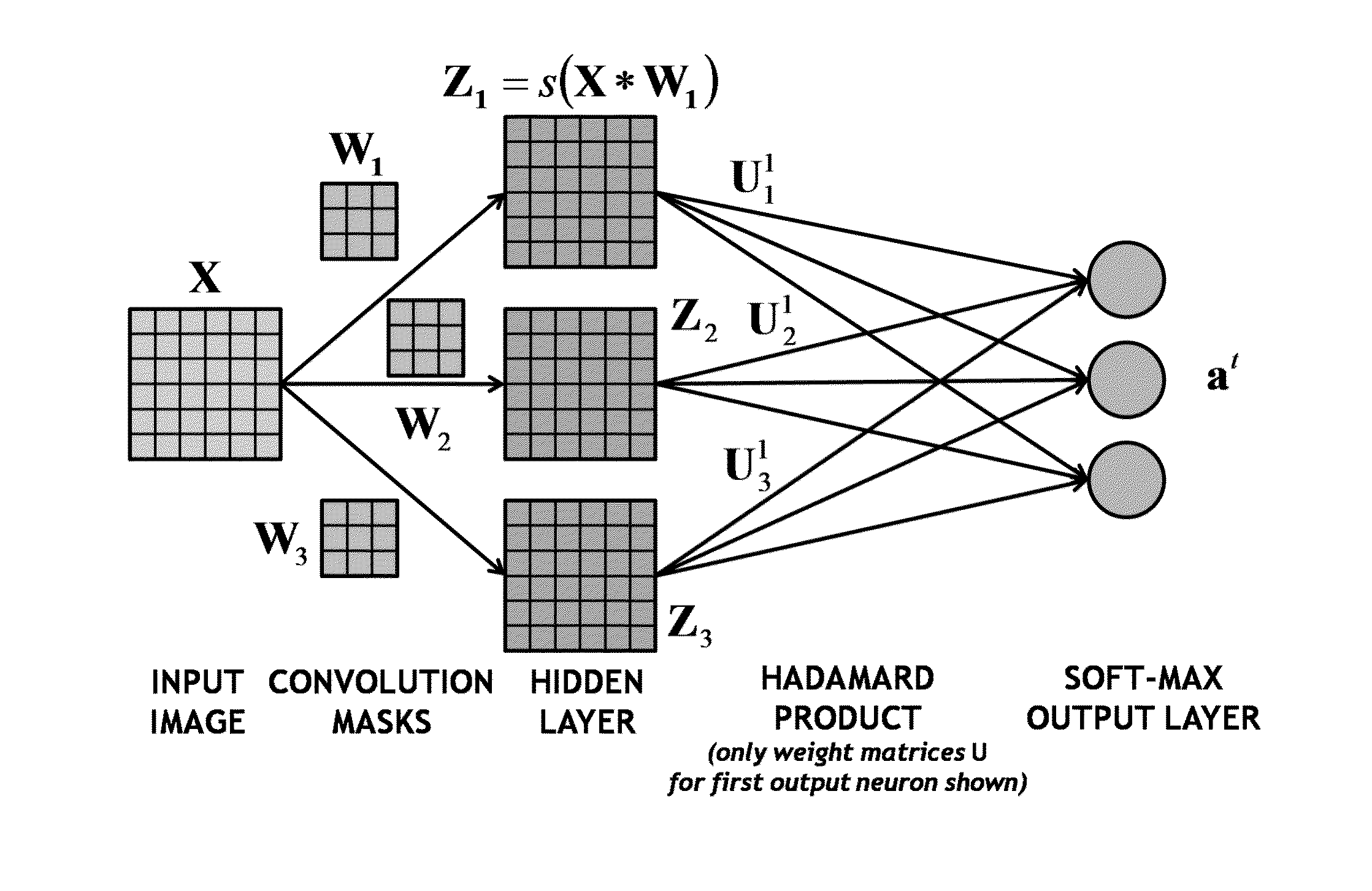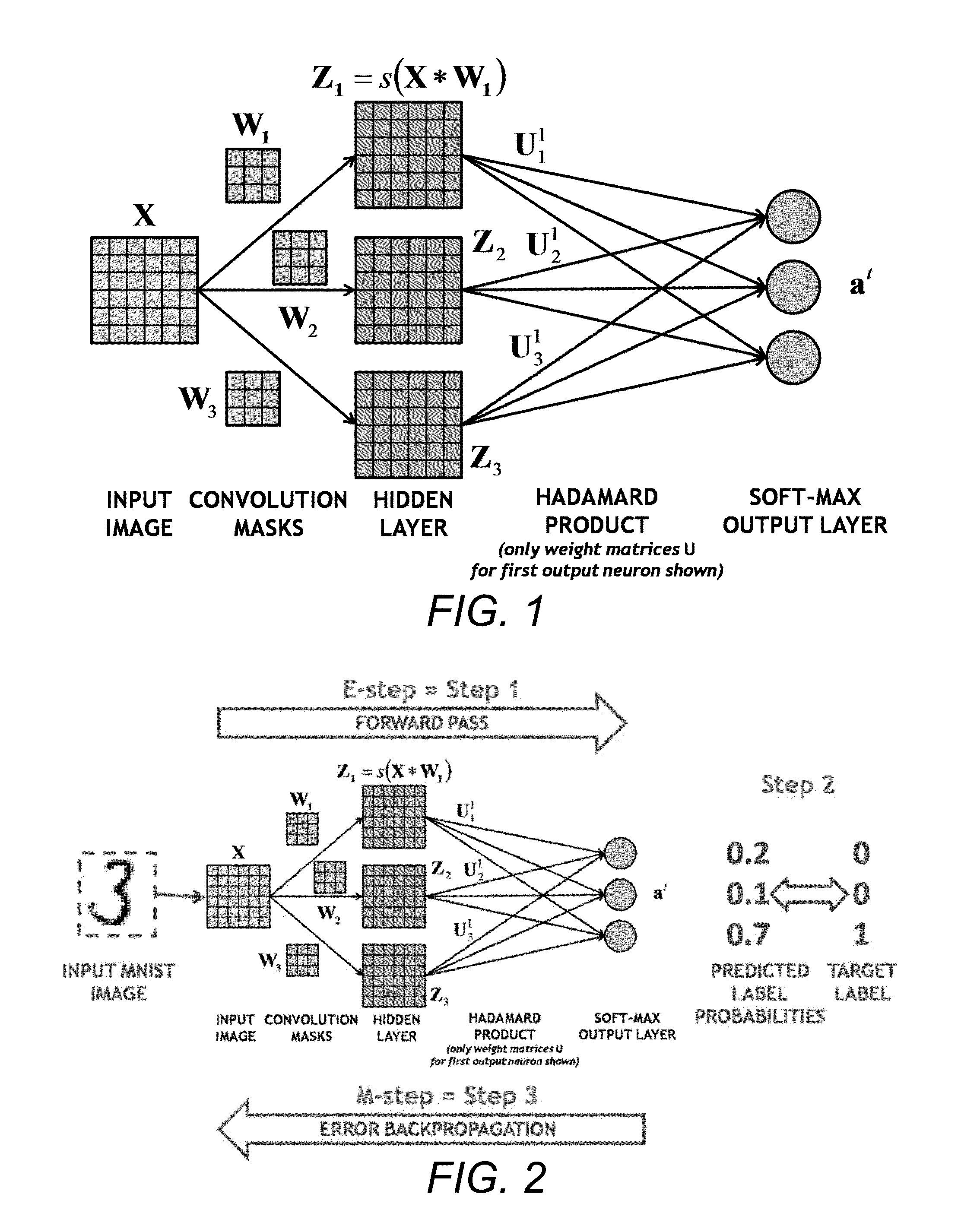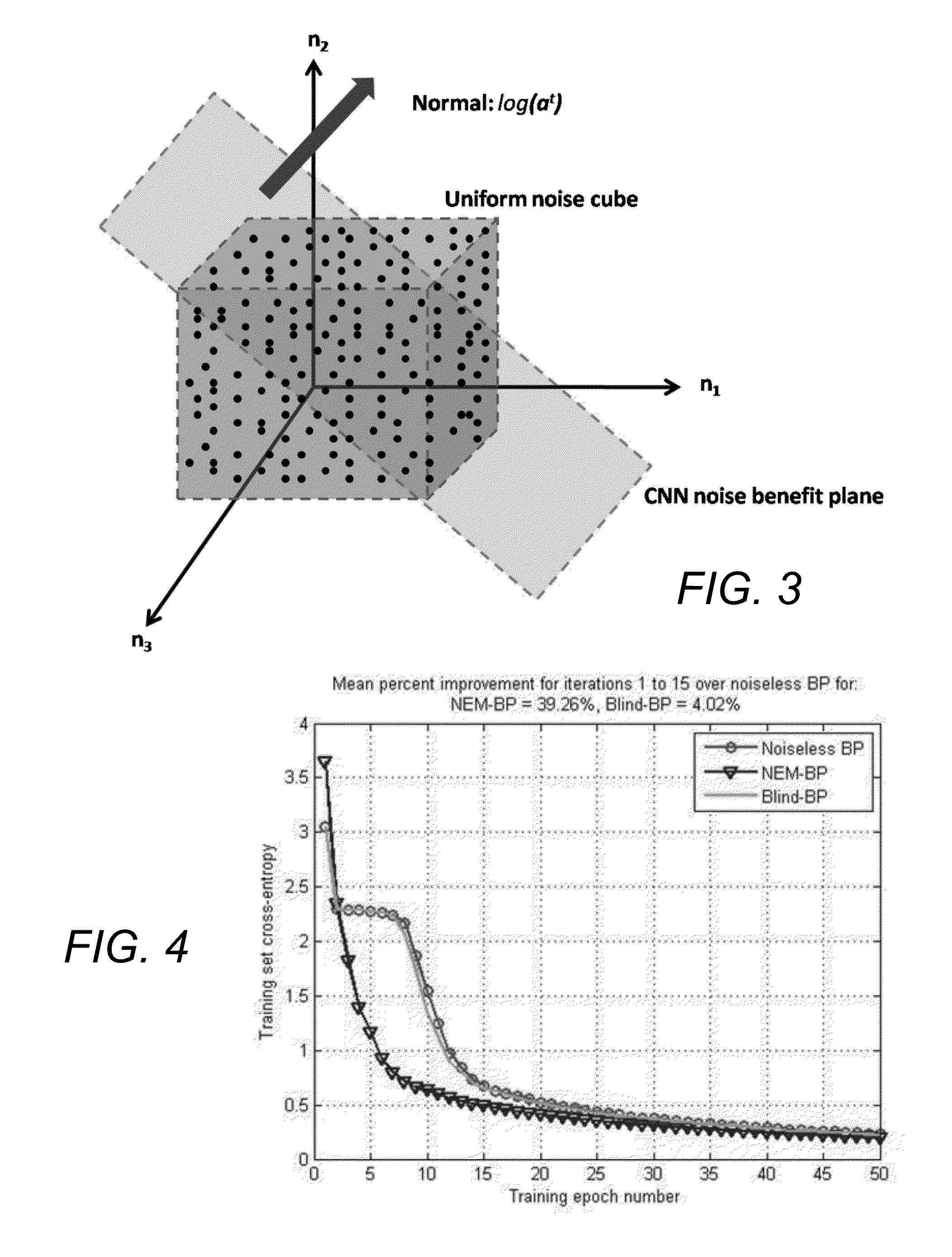Noise-enhanced convolutional neural networks
a convolutional neural network and noise-enhanced technology, applied in the field of convolution neural networks, can solve the problems of no fundamental methods for speeding up bp training, processing images may only exacerbate this computational burden, and only linear time complexity in the number of training samples, so as to improve the accuracy of the learning computer system and speed up learning
- Summary
- Abstract
- Description
- Claims
- Application Information
AI Technical Summary
Benefits of technology
Problems solved by technology
Method used
Image
Examples
Embodiment Construction
[0035]Illustrative embodiments are now described. Other embodiments may be used in addition or instead. Details that may be apparent or unnecessary may be omitted to save space or for a more effective presentation. Some embodiments may be practiced with additional components or steps and / or without all of the components or steps that are described.
[0036]Injecting carefully chosen noise can speed convergence in the backpropagation training of a convolutional neural network (CNN). The Noisy CNN algorithm may speed up training on average because the backpropagation algorithm turns out to be a special case of the expectation-maximization (EM) algorithm and because such noise may speed up the EM algorithm on average. The CNN framework may give a practical way to learn and recognize images because backpropagation scales with training data. It may have only linear time complexity in the number of training samples. The Noisy CNN algorithm may find a separating hyperplane in the network's no...
PUM
 Login to View More
Login to View More Abstract
Description
Claims
Application Information
 Login to View More
Login to View More - R&D
- Intellectual Property
- Life Sciences
- Materials
- Tech Scout
- Unparalleled Data Quality
- Higher Quality Content
- 60% Fewer Hallucinations
Browse by: Latest US Patents, China's latest patents, Technical Efficacy Thesaurus, Application Domain, Technology Topic, Popular Technical Reports.
© 2025 PatSnap. All rights reserved.Legal|Privacy policy|Modern Slavery Act Transparency Statement|Sitemap|About US| Contact US: help@patsnap.com



